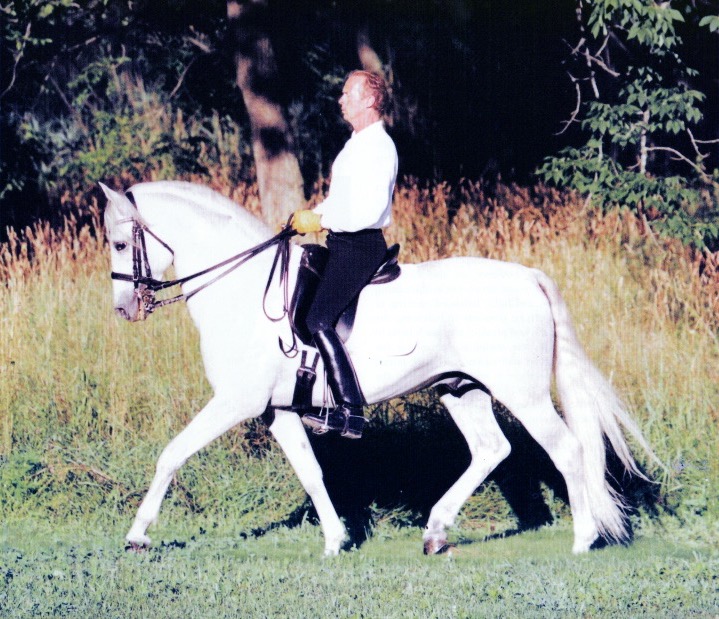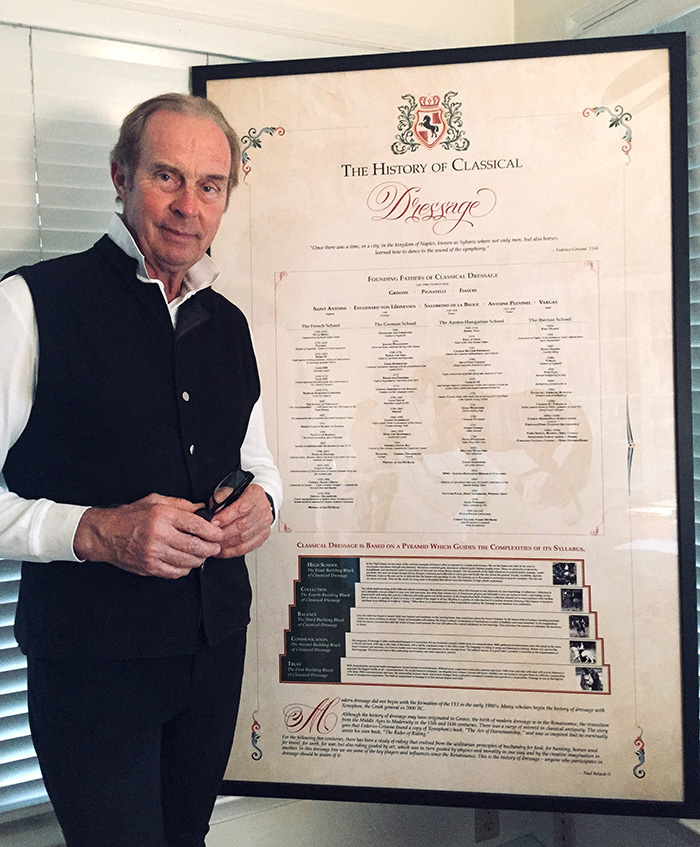with Paul Belasik

Communication: The Second Building Block of Classical Dressage
(Have you read about the first building block TRUST – here
Think of a very young child. Its parents talk to it from birth. They make sounds and become completely elated when the child utters its first sounds that are word-like. There are hours and hours of work, the adults repeating sounds over and over. There are huge rewards of the parents’ approval when the baby starts copying the sounds. Then there come corrections to refine the sounds. There is more practice, a gradual slow process. No child was ever born speaking like Pablo Neruda. Such art in the use of words is a long process.
Now take away those sounds. The communication between a horse and rider is tactile, bordering on the metaphysical. But it will be a similar process. Tiny utterances of feelings that begin to illicit responses from one partner and the responses of other the partner are understood.
Learning to communicate with the dressage horse traditionally begins with longeing the rider, who is the sitting on the horse in the saddle, but with no reins to guide the horse and no stirrups to assist in balance. This balancing concentrates on the connection to the horse through the rider’s seat. It develops an awareness in an area of the human body which houses some of the densest amount of tactile receptors. This isn’t an accident, it is easy to feel things through the seat.
In the beginning, it will be very basic, maybe which way the horse is going, and how can a rider balance to stay on. One of the problems of learning to ride is that even a very young riding student will come to riding with a fairly skilled vocabulary. This has to be disarmed. The human brain will immediately begin imposing order, form reasons and descriptions, explanations about what is going on. Most them will not be helpful. I think it is very important to find the best teacher that you can in the beginning. It is very hard to correct improper fundamentals once they get ingrained in the muscle and mental memory of the rider.
So, at first you are not allowed to guide the horse. You are being taught to listen on the longe line and nothing limits your ‘hearing’ like bad position. In learning to balance yourself on the moving horse, you learn to read the horse like a surfer learns to read and ride a wave. You learn to open yourself up to word feelings on the horse. There are some universal elements of the proper seat. It is a stance like posture, in involves the somatic nervous system, it demands good posture, you practice and practice. You start to make your body into a machine that can recognize feelings. It can circumvent the human brain’s often emotional impositions of some order when there is none, or when the rider’s interpretation is incorrect.
There are many books and tons of information on the rider’s seat. I think some of them are very helpful. By all means study the seat and the communication but remember the zen monk’s advice: You can point your finger at the moon, but be careful not to confuse the two. The words are abstractions. Riding is about the feelings. You feel the horse, you give a feeling back. Like two musicians playing together, you are trading sounds not words.
Almost all equitation, riding and training of the horse is associative based, or trained by using cues. There is the simple challenge of inertia: the horse, being many times the weight of a human, cannot be physically pushed sideways with leg strength. It learns to move through repetitions, training with incentives.
Having said that, at the highest forms of riding, the movements themselves, like a levade for example, can be such feats of extreme balance that the rider can now physically effect the horse’s balance. Here the rider has reached the pinnacle of advice of the old masters, to become one with the horse. There are no longer two beings with two different centers of mass. There is one unique creature who acts and thinks as one. Even if one does not aspire to ride at that level, all good instructors hold themselves responsible that they did not teach or allow faults in position from the beginning that one day would put a ceiling on their riders’ performances. So all dressage riders have to start to master their own position first. Before you can feel a horse’s balance, you have to master your own.
This series celebrates the launch of Paul Belasik’s latest project – a wall poster that chart the history and heritage of the classical tradition of dressage

Iif you would like to order the poster:
https://paulbelasik.com/index.php/product/the-classical-training-scale-and-history-poster/
Did you miss the first article in this series? https://www.horsemagazine.com/thm/2020/10/paul-belasik-charts-the-heritage-of-dressage/


Thank you